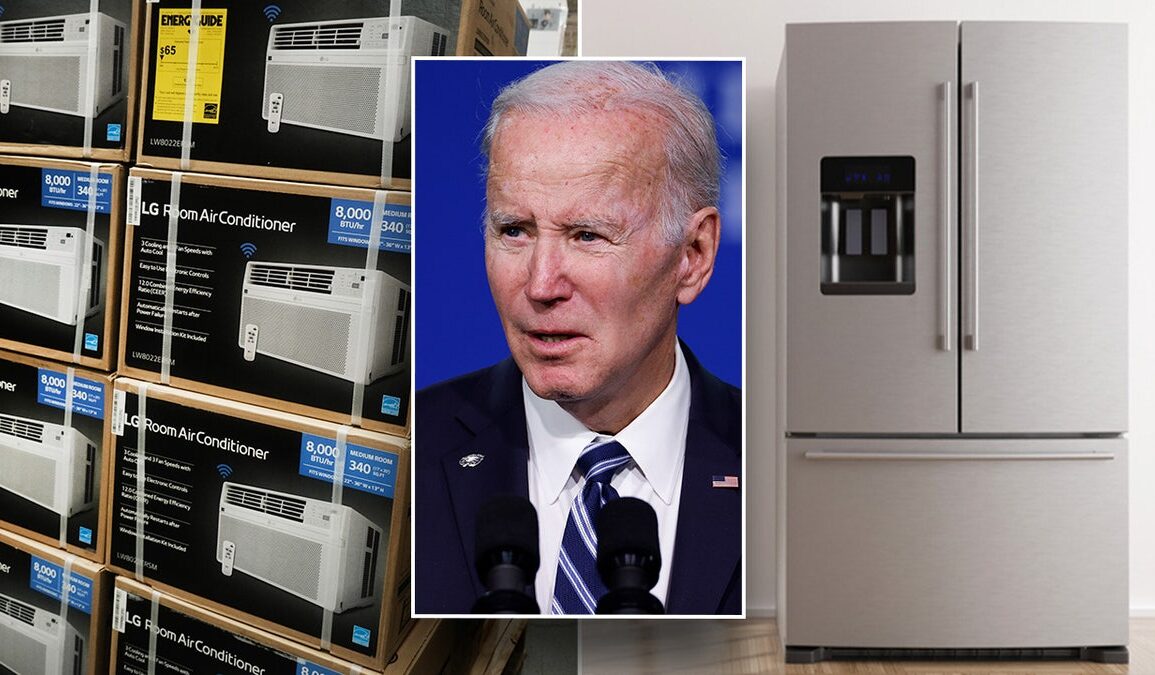Republican presidential candidate Doug Burgum discusses President Biden’s economy, UAW strike, and the presidential Republican primary on ‘Your World.’ The Biden administration issued regulations impacting air conditioners and refrigerators in an effort to curb greenhouse gas emissions, but experts warn the rules will drive consumer prices higher.
As part of the administration’s efforts to combat “climate-damaging” hydrofluorocarbons (HFC), the Environmental Protection Agency (EPA) finalized a rule to accelerate an economy-wide transition to more advanced refrigeration and cooling technologies that don’t use HFCs, and proposed a second rule to manage HFCs in existing products. HFCs are chemicals common in household appliances, but environmentalists say they contribute to global warming.
“These actions embody President Biden’s leadership on the climate crisis by tackling these planet-warming chemicals while investing in American technology and innovation,” said EPA Administrator Michael Regan.
However, energy experts have expressed concerns that the EPA’s regulations targeting HFCs will ultimately lead to higher prices for new products and repairs, thereby harming consumers. The new eco-friendly refrigerants, which are classified as flammable, require additional precautions in air conditioning systems. Critics argue that these regulations limit competition and make the more expensive, environmentally-friendly option the only choice, resulting in increased prices.
The actions announced by the EPA are set to go into effect in early 2025 and come as a result of the American Innovation and Manufacturing (AIM) Act passed by Congress and signed by former President Donald Trump in 2020. The legislation authorizes the EPA to implement a 15-year phase-down of HFCs.
In addition, Democrats and more than a dozen Republicans voted in favor of ratifying the Kigali Amendment in September 2022. This global agreement, first introduced in 1987 under the United Nations’ Montreal Protocol, requires signatories to reduce usage of HFCs by 85% by 2033. The provision has been ratified by 138 international parties, including the European Union.
While industry groups, such as the National Association of Manufacturers and the Chamber of Commerce, have supported federal efforts to curb HFC usage, critics argue that the government should pursue HFC restrictions through domestic legislation to allow for potential reversals if consumer costs become too burdensome.
Climate activists and Democrats have been advocating for HFC reductions, emphasizing the significant contribution of these chemicals to climate change. They argue that climate-friendly alternatives to HFCs are available and that a phasedown of HFC use is supported by both industry and lawmakers from both parties.
The EPA’s regulations on air conditioners and refrigerators are just one aspect of the Biden administration’s broader efforts to address climate change. However, concerns remain about potential price increases and the impact on consumers and businesses, particularly in regions where air conditioning is crucial.
Overall, these regulations reflect the ongoing debate between environmental protection and economic considerations, with experts and stakeholders expressing differing opinions on the potential benefits and drawbacks of the EPA’s actions.




